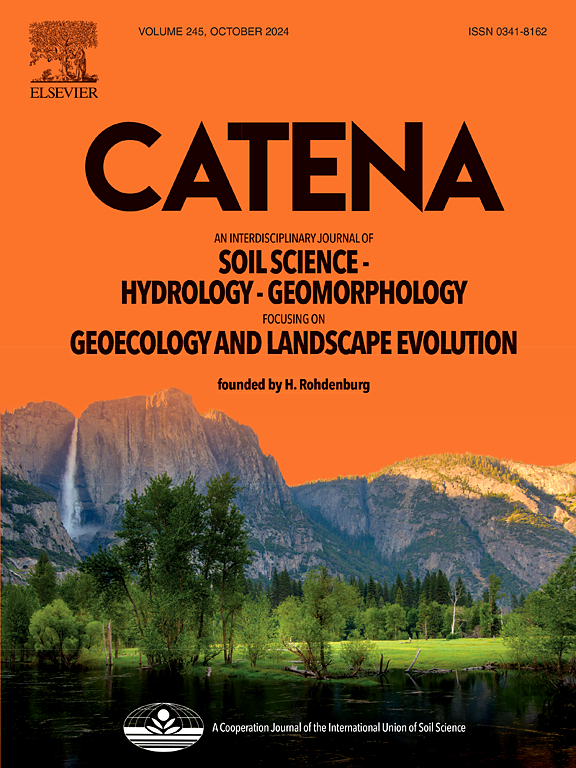Response of soil erosion to vegetation restoration and terracing on the Loess Plateau
2023-06-15 null null 227(卷), null(期), (null页)
Soil erosion exhibited significant decrease due to the implementation of considerable soil and water conservation practices on the Loess Plateau, and further induced less sediment discharged into the Yellow River. However, the influences of these practices on soil erosion have not been comprehensively investigated over large-scale regions. This study analyzed spatiotemporal variation of vegetation cover, and identified the distribution of terraces by using Google Earth remote sensing images in the whole Loess Plateau. The USLE model (Universal Soil Loss Equation) was applied to estimate responses of soil erosion to vegetation restoration and terraces. The annual regional-averaged NDVI increased from of 0.46 in 2000 to 0.63 in 2018, suggesting significant vegetation improvement due to afforestation. We detected 4.73 x 104 km2 of terraces by 2018, which covered approxi-mately 1.5% of the whole Loess Plateau. The terraces were mainly distributed in the upstream of the Weihe River, Fenhe, Zuli, Jinghe, and Taohe River basins. The validated soil erosion model showed that vegetation changes caused a remarkable reduction of 51.2% soil erosion from 2000 to 2018 across the Loess Plateau. A scenario modelling with terraces reduced 19.4% of soil erosion, indicating their significant effects on soil erosion controlling. This study could give a useful reference to assess soil erosion changes response to vegetation restoration and terrace at a large scale. The results can be used to optimize the spatial layout of the measures for soil erosion control in the Loess Plateau in the future.
相关推荐
- PESERA-LP: A coarse-scale process-based fluvial erosion model for topographically complex regions [2023-06-15]
- Remote sensing monitoring of irrigated area in the non-growth season and of water consumption analysis in a large-scale irrigation district [2023-06-15]
- Screening of New Dendrobium officinale Strains Adapted to Karst Forest Environmental Stress Based on Electrophysiological Detection Method [2023-06-15]
- The greening of vegetation on the Loess Plateau has resulted in a northward shift of the vegetation greenness line [2023-06-15]
- Effect of vegetation restoration type and topography on soil water storage and infiltration capacity in the Loess Plateau, China [2023-06-15]



